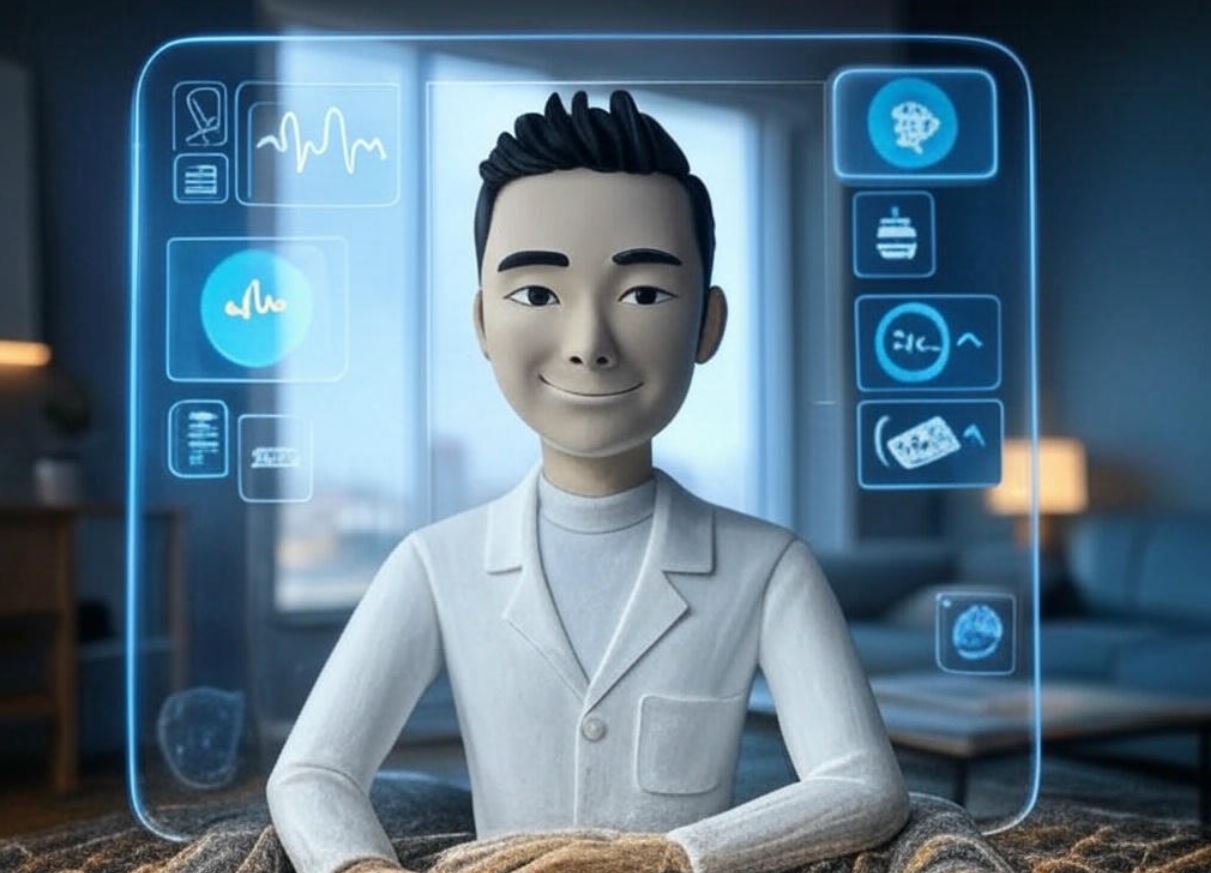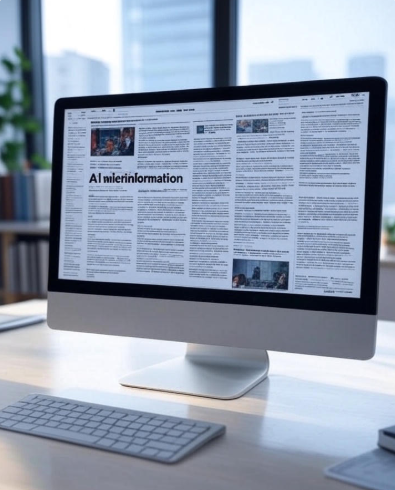Imagine if you could teach a robot how the world works just by showing it videos. Not carefully labeled training data or expensive simulations, but regular old video footage of people doing everyday things. That’s exactly what Meta just pulled off with V-JEPA 2, and honestly, it’s kind of mind-blowing.
Meta announced this new AI “world model” on Wednesday at VivaTech, and it represents a completely different approach to teaching machines about the physical world. Instead of programming robots with thousands of rules about gravity, momentum, and object interactions, V-JEPA 2 learns all of this stuff naturally by watching video.
This isn’t just another incremental AI update. We’re talking about a fundamental shift in how we think about machine intelligence, and it could be the breakthrough that finally makes truly capable robots a reality.
What Makes V-JEPA 2 Actually Special
Let’s start with what this thing actually does. V-JEPA 2 is designed to understand movements of objects to enhance the technology of machines such as delivery robots and self-driving cars. But that description doesn’t do justice to how revolutionary this approach really is.
V-JEPA 2 is an extension of the V-JEPA model that Meta released last year, which was trained on over 1 million hours of video. Think about that for a second over a million hours of video showing how the real world actually works. People picking up objects, things falling due to gravity, liquids flowing, doors opening and closing. All the basic physics and interactions that we take for granted.
The “JEPA” part stands for Joint Embedding Predictive Architecture, which is a fancy way of saying it learns to predict what happens next in a video without needing to generate every single pixel. It’s like the difference between understanding a story and being able to recite it word-for-word.
The Robot Common Sense Problem
Here’s why this matters so much: robots have always sucked at common sense. You can program a robot to perform specific tasks perfectly, but throw in something unexpected – like a cup that’s sitting at a slightly different angle than usual – and it completely falls apart.
V-JEPA 2 helps AI agents understand the physical world and its interactions by understanding patterns of how people interact with objects, how objects move in the physical world and how objects interact with other objects. This is exactly the kind of intuitive physics understanding that humans develop as toddlers but has been nearly impossible to give to machines.
By learning from video, it aims to give robots physical common sense for advanced, real-world tasks. The key word here is “common sense” that basic understanding of how things work that lets you navigate the world without thinking about it.
Real-World Robot Testing Results
Meta didn’t just release this as a research paper and call it a day. Meta said it has already tested this new model on robots in its labs. Meta reports that V-JEPA 2 performs well on common robotic tasks like and pick-and-place, using vision-based goal representations.
Pick-and-place might sound simple, but it’s actually incredibly complex when you think about it. The robot needs to understand object permanence, predict how objects will behave when grasped, account for lighting and shadows, and adapt to countless variations in real-time. The fact that V-JEPA 2 can handle this using just visual understanding is genuinely impressive.
The paper compares their results with older approaches, which apparently had something like a 15% success rate, so jumping to an 80% success rate does seem like a significant jump. That’s not just an improvement – that’s the difference between a cool research project and something that might actually work in the real world.
The Speed Advantage That Changes Everything
Here’s where things get really interesting from a practical standpoint. According to Meta, V-JEPA 2 is 30x faster than Nvidia’s Cosmos model, which also tries to enhance intelligence related to the physical world.
Speed matters enormously in robotics. A robot that takes 30 seconds to figure out how to pick up a cup is useless. A robot that can make those same calculations in real-time while adapting to unexpected situations? That’s actually useful.
The speed advantage comes from V-JEPA 2’s approach of learning representations rather than generating pixel-perfect predictions. V-JEPA pretraining is based solely on an unsupervised feature prediction objective, and does not utilize pretrained image encoders, text, negative examples, human annotations, or pixel-level reconstruction. It’s learning the essence of how things work rather than memorizing exact visual details.
Why This Beats Traditional Approaches
Most attempts at teaching robots about the world have relied on one of two approaches: either hand-coding rules about physics (which breaks down with real-world complexity) or using carefully labeled training data (which is expensive and limited). V-JEPA 2 sidesteps both problems.
The open-source model, revealed on Wednesday at the VivaTech learns from raw, unlabeled video data. This means it can potentially learn from the massive amounts of video content that already exist on the internet. Every YouTube video, every security camera feed, every smartphone recording becomes potential training data.
The implications are staggering. Instead of needing specialized datasets for every possible scenario a robot might encounter, you could theoretically train it on the collective visual experience of humanity.
The Benchmarks That Actually Matter
Meta isn’t just making claims about performance – they’re backing it up with concrete benchmarks. To aid global research, Meta released three video-based benchmarks alongside V-JEPA 2. These tools are designed to measure how well AI models understand, predict, and plan in real-world scenarios.
This is crucial because one of the problems with AI research is that different companies often use different metrics, making it hard to compare results. By releasing standardized benchmarks, Meta is essentially saying “here’s how you can objectively measure whether your world model actually works.”
The three benchmarks focus on understanding (can the AI recognize what’s happening?), prediction (can it guess what happens next?), and planning (can it figure out how to achieve a goal?). These map directly to the core capabilities any autonomous system needs.
The Open Source Strategy
V-JEPA 2’s open-source release intensifies competition in the “world model” AI space. Meta is making both the model and the benchmarks freely available, which is a big deal for several reasons.
First, it accelerates research. When everyone can build on the same foundation, progress happens faster. Second, it puts pressure on competitors to match or exceed these capabilities. Third, it helps establish Meta’s approach as the standard in this space.
The open-source strategy also makes sense from Meta’s perspective. They’re betting that world models will become fundamental infrastructure for AI, similar to how transformer architectures became the foundation for large language models. By making their approach freely available, they’re essentially trying to make it the default choice.
Real-World Applications That Actually Make Sense
Let’s talk about where this technology could actually make a difference in the near term. V-JEPA 2 is designed to understand movements of objects to enhance the technology of machines such as delivery robots and self-driving cars.
Delivery robots are probably the most obvious application. These things need to navigate complex environments, avoid obstacles, and interact with objects safely. Current delivery robots are frankly pretty limited – they work in controlled environments but struggle with anything unexpected. A robot with genuine understanding of physics and object interactions could be far more capable.
Self-driving cars are another natural fit. Understanding how objects move and interact in 3D space is crucial for safe autonomous driving. If a car can predict how a pedestrian will move based on their body language, or anticipate how traffic will flow around an accident, it becomes much safer and more effective.
But the applications go way beyond these obvious examples. Manufacturing robots that can adapt to variations in parts and assembly processes. Home robots that can actually help with household tasks. Search and rescue robots that can navigate unpredictable disaster zones.
The Competition Landscape
World models have attracted a lot of buzz within the AI community recently as researchers look beyond large language models. This isn’t just Meta working on this problem – it’s becoming a major focus area across the industry.
Nvidia has their Cosmos model, which Meta claims to outperform by 30x. OpenAI is working on similar approaches. Google has been researching world models for years. The fact that all the major AI companies are investing heavily in this space suggests they all see it as fundamental to the next generation of AI systems.
What makes Meta’s approach particularly interesting is the combination of scale (trained on over a million hours of video), performance (80% success rate on robotic tasks), and accessibility (open source release). That’s a compelling package.
The Technical Breakthrough Behind the Hype
The real innovation here isn’t just that V-JEPA 2 learns from video – it’s how it learns. V-JEPA 2, our state-of-the-art world model, trained on video, enables robots and other AI agents to understand the physical world.
Traditional video understanding models try to predict every pixel in future frames, which is computationally expensive and often unnecessary. V-JEPA 2 learns abstract representations that capture the essential dynamics without getting bogged down in visual details.
This approach is inspired by how humans understand the world. You don’t need to visualize every detail of what happens when you drop a ball – you just understand that it falls. V-JEPA 2 learns similar abstract concepts about physics and object interactions.
What This Means for the Future
“We believe world models will usher a new era for robotics, enabling real world AI agents to help with chores and physical tasks without needing astronomical amounts of robotic training data,” explained Meta’s Chief AI Scientist Yann LeCun in a video.
That quote from Yann LeCun gets to the heart of why this matters. Current approaches to robotics require enormous amounts of specialized training data for each task. Want a robot that can fold laundry? You need to collect thousands of examples of laundry folding. Want it to also wash dishes? That’s a completely separate training process.
V-JEPA 2 suggests a different path: train once on general video data, then apply that understanding to specific tasks. It’s the difference between teaching someone the rules of physics and then letting them figure out how to apply those rules, versus teaching them every specific task individually.
The Honest Assessment
Look, I’m excited about this technology, but let’s be realistic about where we are. An 80% success rate on pick-and-place tasks is impressive, but it’s not ready for your kitchen. These are still early days, and there’s a lot of work left to do.
The real test will be how V-JEPA 2 performs on more complex, multi-step tasks in uncontrolled environments. Lab demonstrations are one thing – the real world is messier, more unpredictable, and full of edge cases that can break even sophisticated AI systems.
But here’s what I find genuinely exciting: this feels like a fundamentally sound approach that will only get better with more data and computing power. Unlike some AI breakthroughs that hit hard limits quickly, world models based on video understanding seem to have a clear path toward continuous improvement.
Insights
Meta’s V-JEPA 2 represents a significant step toward AI systems that actually understand the physical world rather than just memorizing patterns. It’s not going to revolutionize robotics overnight, but it’s the kind of foundational breakthrough that makes future revolutions possible.
The combination of learning from readily available video data, achieving genuine improvements in robotic task performance, and being released as open source makes this a development worth paying attention to. Whether you’re interested in robotics, autonomous vehicles, or just the future of AI in general, V-JEPA 2 is pointing toward a future where machines might finally develop something approaching common sense about how the world works.
And honestly, it’s about time.



